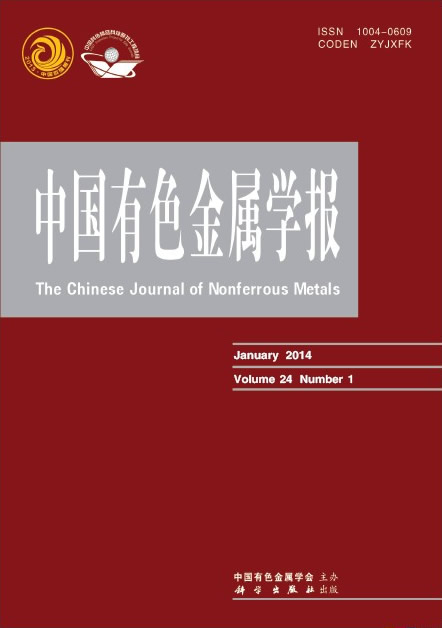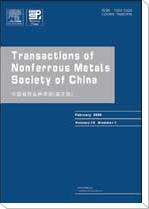中国有色金属学报(英文版)
Transactions of Nonferrous Metals Society of China
| Vol. 35 No. 9 September 2025 |
(1. State Key Lab of Materials Processing and Die & Mould Technology, School of Materials Science and Engineering, Huazhong University of Science and Technology, Wuhan 430074, China;
2. State Key Laboratory of Solidification Processing, Northwestern Polytechnical University, Xi’an 710072, China;
3. School of Aerospace Engineering, Huazhong University of Science and Technology, Wuhan 430074, China;
4. Shenzhen Huazhong University of Science and Technology Research Institute, Shenzhen 518057, China)
Abstract:Metallic glass matrix composites (BMGCs) with compositions of [(Zr0.5Cu0.5)0.925Al0.07Sn0.005]100-xTax (atomic fraction, %, x=3, 5, 7) were successfully prepared via dealloying in metallic melt. The reinforcing phase in these alloys has core-shell hybrid structure with Ta-rich particles as core and B2-CuZr as shell. In this method, the dealloyed Ta from Zr-Ta pre-alloys maintained in solid state and aggregated to form the fine Ta-rich phase in the final products. This effectively decreases the size of Ta-rich phase compared with that prepared via conventional arc-melting, where the Ta-rich phase was formed through dissolving and precipitation. Among the three compositions, [(Zr0.5Cu0.5)0.925Al0.07Sn0.005]95Ta5 showed the highest plastic strain of 11.2%, much higher than that of the arc-melted counterparts (4.3%). Such improvement in mechanical properties was related with the refined core-shell hybrid reinforcing structure, which could hinder the rapid propagation of main shear band more efficiently and cause them to branch and proliferate at the interface.
Key words: metallic glass matrix composites; core-shell hybrid reinforcement structure; dealloying in metallic melt; strength and toughness; B2-CuZr


